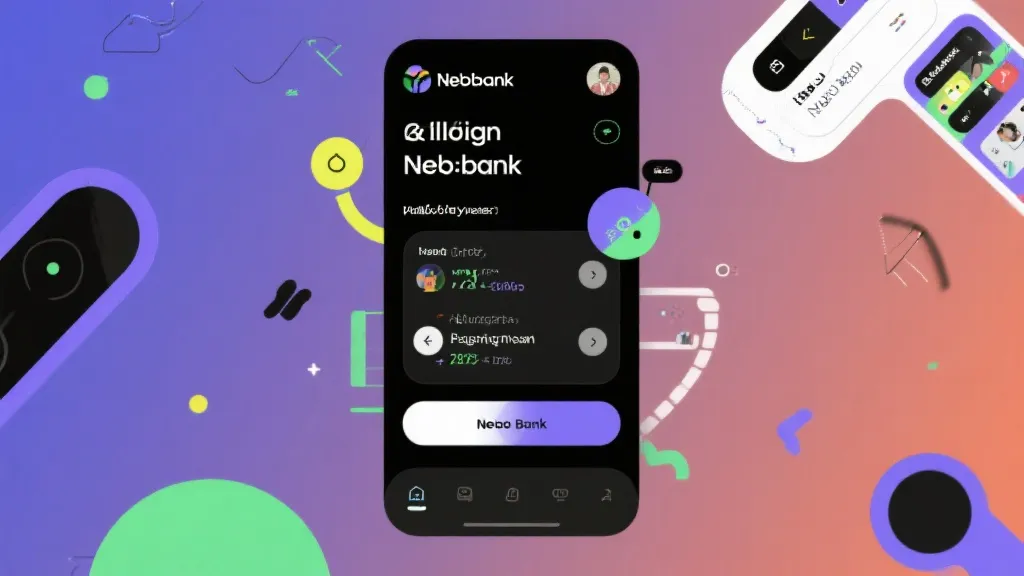This article delves into the competitive landscape surrounding Webbank, a pivotal player in the online banking industry. It objectively explores market dynamics, examining entities offering similar services while providing insights into industry growth and challenge factors influencing consumer choice, in addition to highlighting key differences among market participants.

Webbank stands as a significant figure in the realm of online financial services. As a digital banking institution, it emphasizes delivering a broad spectrum of banking solutions tailored to meet the modern consumer’s needs. Over the years, Webbank has carved out a distinct identity in a crowded market. The current digital banking climate is marked by rapid technological advancements and shifting consumer preferences, all of which shape the strategies of contemporary digital banking players. Understanding Webbank’s position is crucial in grasping how digital banking evolves and often responds to broader financial trends.
The modern customer increasingly demands accessibility, efficiency, and customization in financial services. Webbank has embraced these demands by utilizing cutting-edge technologies, creativity in product offerings, and a focus on user experiences that prioritize customer engagement. To truly appreciate Webbank's impact, one must consider its innovations, customer relations, and adaptations to the greater banking ecosystem.
With the emergence of fintech (financial technology) innovations, the landscape of online banking has become increasingly competitive. Webbank competitors are numerous and varied, ranging from traditional banks that have transitioned to robust digital platforms to fintech startups offering niche services that appeal to specific consumer segments. As these competitors strive for market share, they leverage technology to enhance customer experience, streamline operations, and offer customized financial products directed at distinct audience needs.
Understanding this competition requires deeper exploration into how different institutions use technology to differentiate their services. Traditional banks, with their long-standing reputations and extensive branch networks, often struggle to adapt quickly to rapid technological changes. In contrast, fintech startups, like Webbank, harness agility and specialized tech solutions to create user-friendly platforms that resonate with younger, tech-savvy consumers. This increasing rivalry pushes all players to innovate continuously.
Several entities are prominent in competing with Webbank by offering similar or superior services. These include both long-established institutions and innovative fintech companies, each contributing unique elements to the competitive landscape. A comprehensive analysis of these competitors reveals an undercurrent of shared objectives — enhancing service delivery through technology while addressing consumer pain points.
Understanding the strategic differences between Webbank and its competitors requires a detailed comparison of their service structures and consumer engagement methods. The arena of digital banking is not merely one of price but encompasses service quality, user experience, and technological reliability. These variables position different entities uniquely within the evolving marketplace.
| Entity | Key Strengths | Technological Innovations |
|---|---|---|
| Webbank | Diversified banking services and strong credit solutions. Webbank’s flexible loan offerings are particularly attractive for those with varying financial needs. | Advanced online portals and apps offering personalized financial management tools such as budgeting calculators and predictive analytics for interpreting financial trends. |
| Ally Bank | Competitive interest rates and efficient digital-only services. Their comprehensive customer support is tailored for digital engagement, enhancing user confidence. | Highly rated mobile app with a focus on customer experience and support, providing seamless access to all services from smartphones or tablets. |
| SoFi | Comprehensive financial planning and investment services that reflect user needs for minimal transaction fees and broad product offerings. | Intuitive platforms that integrate budgeting with investment advice, promoting not just spending but also wealth accumulation among users. |
| Chime | Cost-effective solutions with a no-fee banking structure. Their marketing predominantly targets younger consumers who seek value. | Real-time transaction updates and savings features directly within its app that help users better manage their expenses through automatic savings tools. |
| Capital One | Diverse credit card offerings with rewards programs that cater to the different spending habits of cardholders. | Integration of artificial intelligence for fraud detection and personalized financial advice, setting a high standard for security protocols. |
| Marcus by Goldman Sachs | Leverage of Goldman Sachs’ reputation in finance, emphasizing trust while appealing to customers looking for savings and loan products. | Utilization of data analytics to offer tailored savings advice based on user behavior and spending patterns. |
The competition among digital banks brings forward both challenges and opportunities. Security remains a top concern, demanding continuous innovation in cybersecurity solutions to protect user data against an ever-growing range of cyber threats. Digital banks often become targets due to their growing customer bases and the sensitive nature of the data they manage. Therefore, making substantial investments in cybersecurity measures is not merely advantageous — it is an essential aspect of operational integrity.
Conversely, abundant opportunities lie in the expansion of financial literacy among consumers. As more individuals become comfortable using online banking services, institutions that provide educational resources and tools for users are more likely to distinguish themselves. This could mean offering dedicated platforms, webinars, or customized notifications that guide users through their financial choices, potentially fostering loyalty and trust.
Additionally, the integration of advanced technologies, such as artificial intelligence and machine learning, presents yet another frontier for growth. AI-driven chatbots and personal finance assistants have emerged as critical tools for improving customer service, enabling quick responses to inquiries while reducing operational costs. By leveraging these technologies, digital banks can further enhance user experience and operational efficiency. Implementing AI capabilities for predicting market trends or individual customer needs can transform standard banking transactions into proactive financial management.
Given the dynamic nature of the digital banking industry, remaining competitive requires a steadfast commitment to innovation, consumer satisfaction, and adaptable strategies. Key strategies include continuous technological upgrades to ensure services remain cutting-edge and relevant. Regular software updates, improved security features, and keeping pace with mobile technology trends are imperative. Furthermore, engaging in consumer feedback loops can identify areas for enhancement, showcasing banks' attentiveness to customer needs and satisfaction.
Personalized service offerings fulfill the modern consumer's demand for products that anticipate their needs without a traditional banking experience. This includes tailored loan options based on spending habits, personalized financial advice, and account features that adapt as users’ requirements evolve over time.
Strategic partnerships can also enhance a bank's service capabilities. Collaborations with fintech companies can lead to the development of innovative products that address various consumer requirements. For instance, a partnership with a budgeting app could seamlessly integrate banking services, allowing customers to visualize their spending and financial position more effectively.
Lastly, while compliance and regulation in the financial sector can be challenging, proactive measures to adhere to changing regulations can bestow strategic advantages. Institutions that proactively comply not only maintain customer trust but also mitigate risks associated with legal issues that may arise from non-compliance. Thus, a focus on ensuring legal adherence and fostering transparent communication can set an institution apart for its commitment to consumer protection.
Webbank distinguishes itself through its robust credit solutions and diversified service offerings that cater to a broad audience, particularly focusing on those looking for flexible borrowing options combined with savings products.
Technological advancements enhance customer experience by facilitating faster transactions, improving security, and providing smarter interfacing, while also optimizing banking operations, thus offering a competitive edge to innovating banks.
Trends such as blockchain integration, AI-driven customer interactions, increased demand for personalized financial advice, and mobile-first banking solutions are reshaping the future landscape of digital banking.
Online banks cultivate customer loyalty through excellent customer service, competitive interest rates, personalized communication, and added features such as budgeting tools and financial guidance that provide additional value beyond standard banking services.
Professionals in the digital banking sector should possess a blend of financial acumen, technological proficiency, data analysis capabilities, and strong communication skills to navigate between product innovation and customer interaction effectively.
In a market characterized by constant evolution, Webbank and its competitors must navigate complexities while leveraging innovations to maintain their market position. The shift from traditional banking models to digitally driven platforms signifies an important transition in consumer behavior and financial engagement. Understanding the unique landscapes of these institutions provides valuable insights into the future trajectories of the digital banking sector, highlighting the continued importance of adaptation in a rapidly changing environment.
As digital banking continues to grow, institutions like Webbank must remain committed to innovation and customer-centric practices. This dedication will not only drive their success but will also play a pivotal role in shaping the broader landscape of digital financial services. Their ability to evolve and anticipate consumer needs amid industry disruptions will define their reputation and viability in this increasingly competitive arena.
Understanding Sme Neobank Impact

Exploring Webbank and Its Competitors

Discover Westminster Plaza Orlando

Discover Heartis Eagle Mountain Elegance

Westminster Plaza Orlando: A Comprehensive Guide

Transforming Banking with Sme Neobank

Discovering Westminster Plaza Orlando

Discovering Westminster Plaza Orlando

Life Insurance for Seniors: Maximizing Coverage and Benefits
